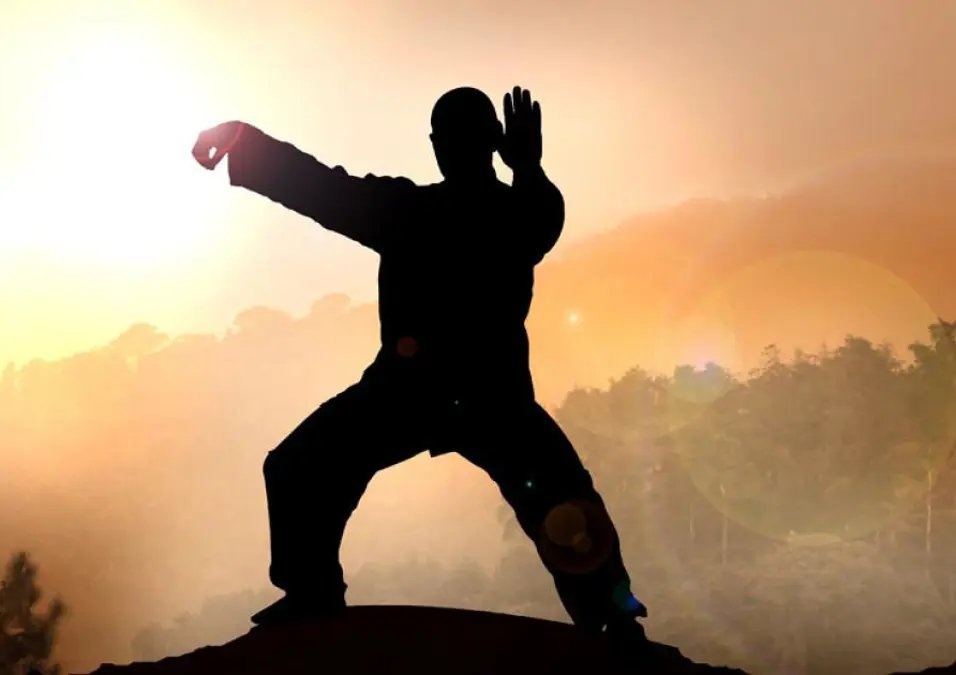Tai Chi: Key Facts and Benefits

SIGN UP FOR YOUR FREE DAY PASS TODAY!
Tai Chi definition
Tai chi is a practice that combines slow, gentle movements, physical postures, a meditative mindset, and controlled breathing. Originating as an ancient martial art in China, it has evolved over the years to emphasize health promotion and rehabilitation.
Developing alongside the philosophies of Daoism and Confucianism, Tai Chi has transformed into a holistic mind-body practice, according to the Smithsonian. Today, it is predominantly practiced as a gentle form of exercise.
Unlike conventional gym workouts that often emphasize muscle tension, Tai Chi focuses on muscle relaxation. It is a restorative practice characterized by soft, circular movements performed slowly and deliberately to enhance the flow of energy, or "qi," throughout the body. Dr. Ng explains that Tai Chi aims to balance opposing energies, a core principle in Chinese medicine, to promote overall health.
History of Tai Chi
Tai Chi originated in China over 700 years ago, during the Song Dynasty. It was created by a Taoist monk named Zhang Sanfeng, who observed a fight between a snake and a crane. He noticed how they moved with grace and fluidity, yet still had strength and power.
Types of Tai Chi
As tai chi evolved over the centuries, various distinctive styles emerged. Today, most modern practices are rooted in one of five main traditions. Dr. Ng offers the following distinctions for each style:
1. Chen
Developed in the 1600s by the Chen family in Chen Village, Chen is the oldest form of tai chi. It features a mix of slow and fast movements, including jumping, kicking, and striking. A key element is "silk reeling," a spiral-like, flowing motion starting at the feet and moving to the hands, forming the foundation of Chen-style tai chi.
2. Yang
Yang, founded by Yang Lu-Ch’an in the mid-1800s, is the most popular form of Tai Chi today. Building on the original Chen style, it emphasizes flexibility through grand, sweeping, slow, and graceful movements. Without the quick movements of Chen, it is more accessible and suitable for all ages and fitness levels, contributing to its popularity.
3. Wu
Developed by Wu Ch'uan-yu, who trained under Yang, Wu Tai Chi focuses on extending the body by leaning forward and backward to improve balance, rather than maintaining a centered position.
4. Sun
Sun Tai Chi, created by Sun Lutang, a Confucian and Taoist scholar, involves more footwork combined with soft, silk-reeling hand movements. It resembles a choreographed dance when performed from start to finish.
5. Hao
Hao is the least popular of the five forms due to its complexity and advanced skill requirements. It emphasizes controlling the movement of qi (internal force) and is not recommended for beginners.
The Benefits of Tai Chi
Tai Chi offers numerous benefits for both your inner and outer health. Here are some of the most notable ones, though this list is not exhaustive.
Balance Improvement
As Olmsted highlights, we begin to lose our balance ability after age 50. Tai chi offers a way to enhance our balance, helping to prevent its decline.
"It's excellent for fall prevention," Dr. Ng confirms. Supporting this, a 2023 study in Frontiers in Public Health found that tai chi, particularly the yang style, improves balance in older adults. Additionally, a 2024 study in the Journal of Neurology, Neurosurgery & Psychiatry showed that tai chi can reduce motor symptoms in Parkinson’s patients, leading to fewer falls.
Increased Flexibility and Agility
Much like yoga, tai chi involves body extensions that enhance flexibility and agility. This not only benefits daily activities but also augments performance in other sports. Some studies suggest that Tai Chi improves balance, while yoga enhances flexibility.
Lung Health
Integrating breath with movement in tai chi positively impacts lung health. A 2021 review by The National Center for Complementary and Integrative Health found tai chi more effective than breathing exercises alone or walking in improving lung function in COPD patients.
High Blood Pressure
A 2020 review of 28 studies involving 2,937 participants revealed that tai chi is more effective at lowering systolic and diastolic blood pressure than health education, no treatment, other exercises, or antihypertensive drugs. Despite the poor quality and variability of the studies, the findings suggest tai chi's potential benefits warrant further research.
Osteoarthritis
A 2015 review covering nine osteoarthritis studies with 543 participants concluded that tai chi alleviates pain and stiffness, potentially enhancing balance. The 2019 updated guidelines from the American College of Rheumatology and the Arthritis Foundation strongly recommend tai chi for managing knee and hip osteoarthritis.
Stress and Anxiety Relief
The meditative aspects of tai chi, combined with physical movement, help calm the mind, improve focus, and may trigger the release of feel-good endorphins, thereby relieving stress and anxiety.
Who Should Consider (and Avoid) Tai Chi
Tai chi can be adapted to suit nearly everyone. If you aim to become more physically active or are managing a health condition like heart disease or COPD, tai chi offers a gentle exercise option that can meet your needs. For those with physical limitations that prevent standing for long periods, seated versions of tai chi are also available.
Although there are no published studies specifically addressing the safety of tai chi during pregnancy, the NCCIH suggests it is generally safe for most pregnant individuals. However, it is essential to take appropriate precautions and consult your doctor before starting a tai chi practice if you are pregnant.
GET YOUR FREE TRIAL TODAY
































































































